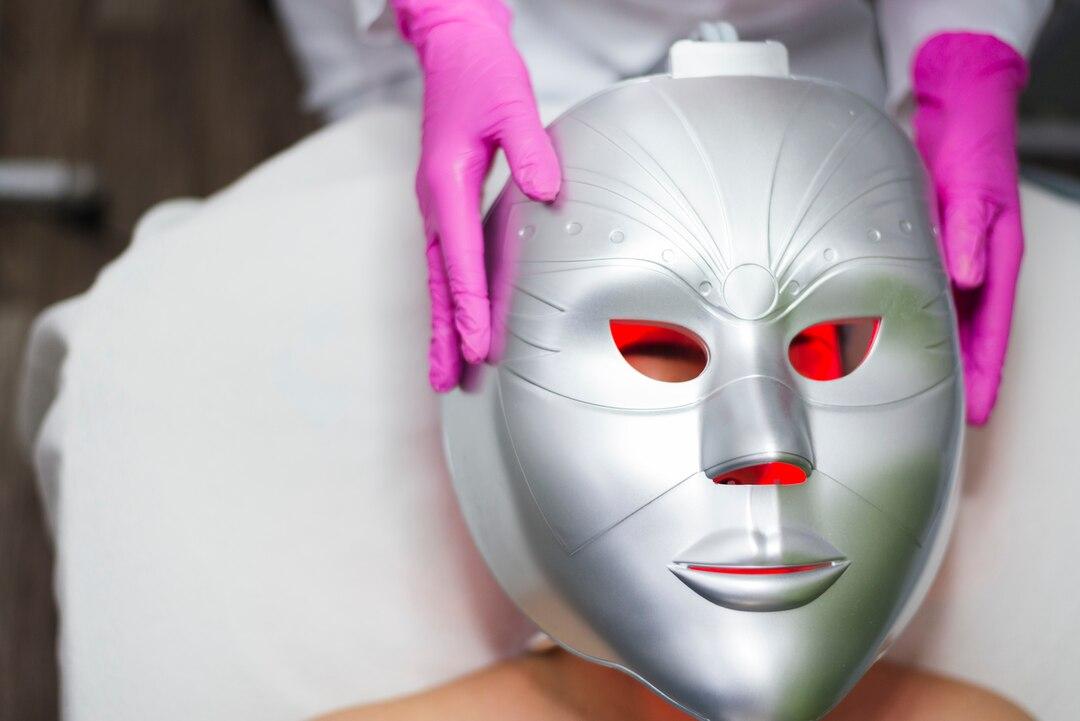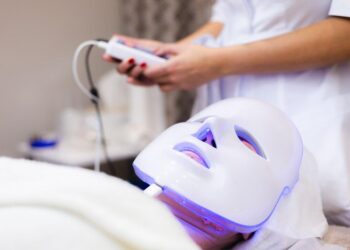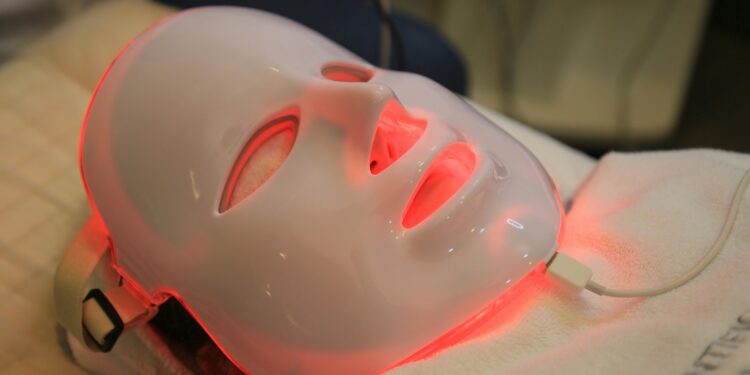Lately, my social media feed has been swarmed with images and videos of Influencers flaunting their glowing skin and attributing it to their usage of LED face masks.
Hollywood stars are not left out as A-listers like Chrissy Teigen, Kourtney Kardashian and Jessica Alba, to name a few have wholeheartedly embraced this high-tech skincare trend. But what exactly are LED face masks, and why have they suddenly become a staple in so many beauty routines?
In this article, we’ll delve into the world of LED light therapy and highlight the benefits of these masks in achieving the much-coveted glowy face that everyone is pining for these days. But first,
What Are LED Face Masks?

LED face masks are skincare devices that make use of different wavelengths of light to combat various skin issues.
These face masks work by allowing the light to penetrate the skin at different depths, stimulating cellular processes like collagen production and cell turnover, which in turn, helps to improve skin texture, tone, and overall appearance.
As per usual for anything skincare, LED masks come in different light types, with each one having its own unique benefit.
Types of Light and Their Benefits
1. Red LED Light (630 nm): This light type helps boost the promotion of collagen, reduces wrinkles, and improves skin elasticity. In addition, constantly using red LED light therapy can help soothe and improve skin conditions to soothe irritated skin.
2. Blue LED Light (415 nm): The blue LED light therapy targets the acne-causing bacteria, Priopionibacterium acne reducing inflammation, and preventing breakouts.
3. Yellow LED Light (550 nm): Yellow light therapy has especially proven to be effective at reducing redness and skin inflammation, improving the skin texture and stimulating the lymphatic system.
4. Green LED Light (500 nm): This particular light type helps with pigmentation issues as it targets melanocytes, thus, helping to regulate melanin production smoothing out the skin. Additionally, it helps soothe the skin, reducing redness and irritation.
5. Near-Infrared Light (700 – 1200 nm): The NIR is known for its ability to penetrate deeper into the skin and tissues to offer up quite a good range of therapeutic benefits.
The benefits of which include, providing relief from chronic pain conditions such as arthritis, tendonitis, and muscle strains, stimulating cellular activity and enhancing the production of adenosine triphosphate (ATP) and reducing inflammation, among others.
How to Use an LED Face Mask

Learning how to use an LED mask correctly is the key to getting your desired results. Luckily, the steps to follow are easy and they are outlined below.
1. Cleanse Your Face: Wash your face with clean water and soap to ensure the light can penetrate effectively.
2. Wear the Mask: Next, you secure the mask on your face according to the instructions it came packaged with. These instructions tend to differ so make sure to read and follow them thoroughly.
3. Set the Timer: Most masks have a built-in timer. Sessions typically last between 10-20 minutes. Ensure to not overdo it. Follow the set instructions as stated.
4. Consistency is Key: Try to regularly use the mask for the best results.
Takeaways
- LED face masks are mostly safe for use for most skin types and have been approved for at-home use, however, it’s necessary to follow the manufacturer’s guidelines and consult with a dermatologist if you have any concerns.
- LED masks can complement other skincare treatments like serums and moisturizers but make sure to consult your dermatologist before doing this.
- If you’re considering trying one to verify it’s authenticity, look for a mask that fits your face comfortably and has the right light modes for your skin concerns.












